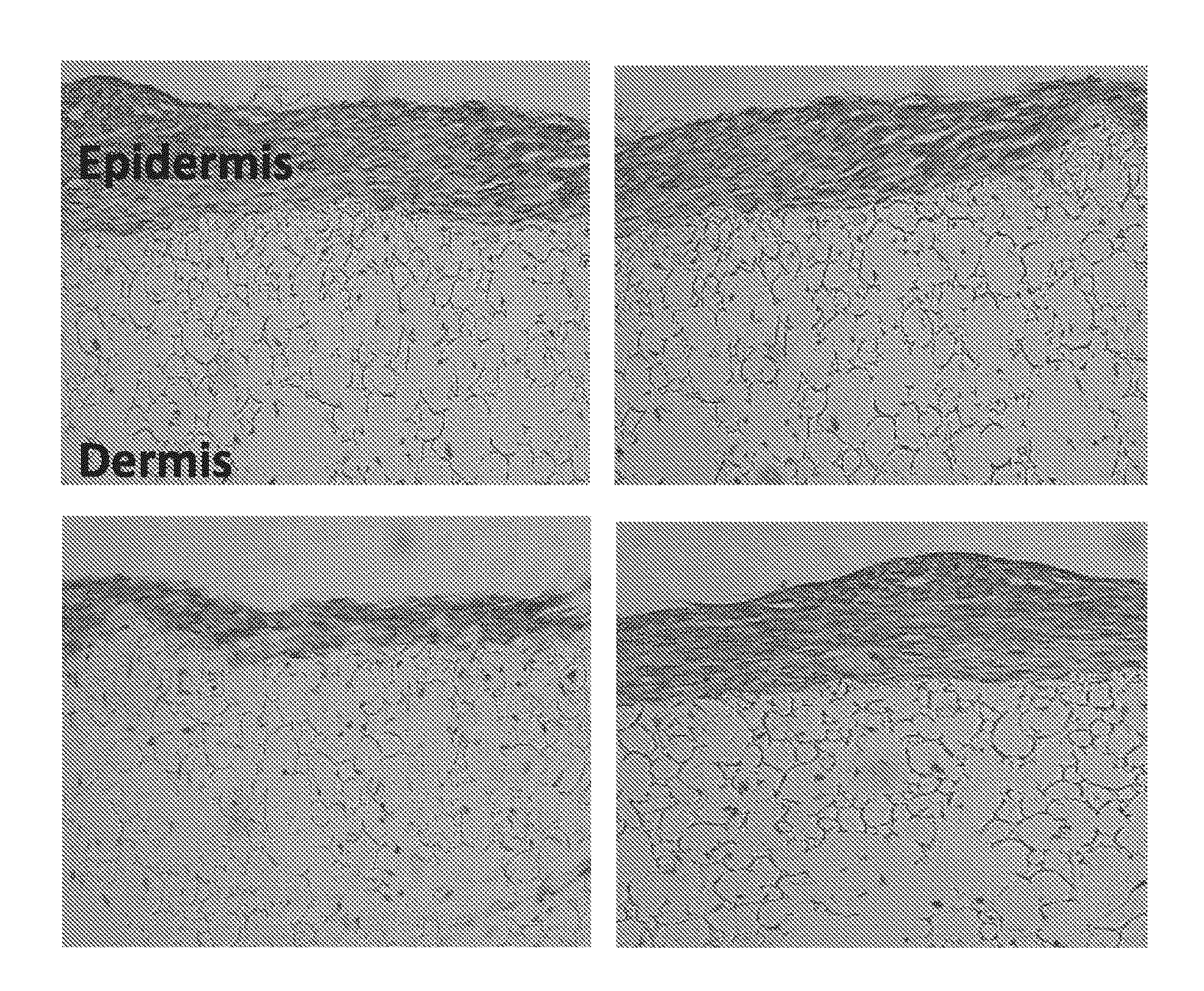Skin model
a skin model and skin technology, applied in the field of skin models, can solve the problems of no safe cost effective way to assess the allergenicity of novel compounds, increasing the threat of acd, and patient discomfor
- Summary
- Abstract
- Description
- Claims
- Application Information
AI Technical Summary
Benefits of technology
Problems solved by technology
Method used
Image
Examples
Embodiment Construction
[0077]Reference herein to “scaffold” means any 3-D structure either native / natural or tissue engineered that is capable of supporting cell migration, cell infiltration and / or cell proliferation.
[0078]Reference herein to “autologous” means that the blood derived products and skin explants are derived or collected from the same individual.
[0079]Reference herein to a “sensitizer” includes any chemical compound or chemical agent or antibody that causes a substantial proportion of exposed people or animals to develop an allergic reaction in normal tissue after single or repeated exposure to the said compound, antibody or chemical agent.
[0080]Reference herein to an “allergen” and “allergenic” includes any foreign substance such as an environmental substance or chemical that is capable of inducing allergy or a specific hypersensitive reaction in the body. Common allergens include plant pollens, spores of mold, animal dander, house dust, foods, feathers, dyes, soaps, detergents, cosmetics, ...
PUM
| Property | Measurement | Unit |
|---|---|---|
| depth | aaaaa | aaaaa |
| depth | aaaaa | aaaaa |
| density | aaaaa | aaaaa |
Abstract
Description
Claims
Application Information
 Login to View More
Login to View More - R&D
- Intellectual Property
- Life Sciences
- Materials
- Tech Scout
- Unparalleled Data Quality
- Higher Quality Content
- 60% Fewer Hallucinations
Browse by: Latest US Patents, China's latest patents, Technical Efficacy Thesaurus, Application Domain, Technology Topic, Popular Technical Reports.
© 2025 PatSnap. All rights reserved.Legal|Privacy policy|Modern Slavery Act Transparency Statement|Sitemap|About US| Contact US: help@patsnap.com



